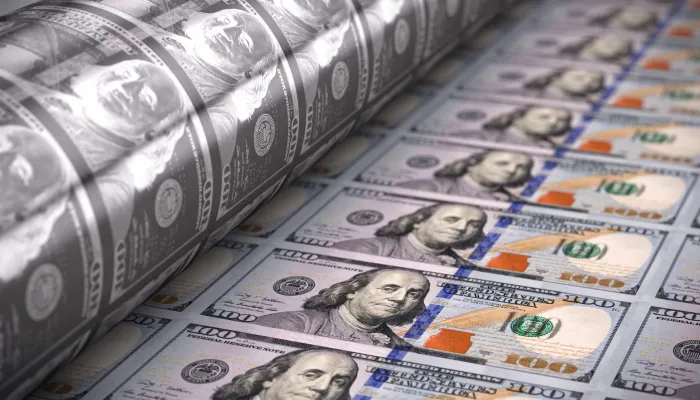CBO's Latest Projections Make Fiscal Goals More Difficult
Federal debt held by the public is on track to exceed its record as a share of the economy – 106 percent of Gross Domestic Product (GDP), set just after World War II – by 2028, according to the Congressional Budget Office's (CBO) latest baseline. By 2033, debt is projected to reach 118 percent of GDP, climbing ever higher over the coming decades. With this in mind, policymakers should seek a fiscal goal to prevent debt from growing indefinitely, causing harm to the budget and the economy.
Unfortunately, policymakers' actions over the last year have made reaching any goal considerably harder – especially for aggressive goals over short timelines. While there isn't one specific, ideal goal, there are several that would represent a significant improvement over our current situation. For example, one possible goal is to stabilize debt or reduce debt to a target level of GDP over five or ten years. Stabilizing debt at its current level – 97.5 percent of GDP – by 2033 would require $8.1 trillion of savings over ten years; maintaining this level over the next five years reduces the necessary savings to $2.9 trillion. On the other hand, reducing debt to 80 percent of GDP – around the level seen at the end of FY 2019 – would require $8.6 trillion of deficit reduction over five years or $15.0 trillion over ten years.
Savings Needed to Meet Various Fiscal Goals
| Fiscal Goal | Five-Year Savings | Ten-Year Savings |
|---|---|---|
| Debt Targets | ||
| Stabilize debt at 110 percent of GDP | n/a | $3.2 trillion |
| Stabilize debt at 100 percent of GDP | $2.1 trillion | $7.2 trillion |
| Stabilize debt at 97.5 percent of GDP (current level) | $2.9 trillion | $8.1 trillion |
| Reduce debt to 90 percent of GDP | $5.4 trillion | $11.1 trillion |
| Reduce debt to 80 percent of GDP | $8.6 trillion | $15.0 trillion |
| Deficit Targets* | ||
| Reduce deficit to 4 percent of GDP | $2.6 trillion | $7.6 trillion |
| Reduce deficit to 3 percent of GDP | $3.9 trillion | $9.9 trillion |
| On-Budget Balance^ | $5.9 trillion | $13.0 trillion |
| Primary Balance^ | $3.8 trillion | $8.9 trillion |
| Full Budget Balance^ | $6.9 trillion | $16.0 trillion |
Sources: Congressional Budget Office and Committee for a Responsible Federal Budget. Figures include interest. ^Balance figures are adjusted to exclude the effects of timing shifts. *Assumes modified savings path of the CRFB Fiscal Blueprint for Reducing Debt and Inflation.
Another goal could be to reduce the budget deficit as a share of GDP relative to what's projected under current law. For example, a 4 percent of GDP deficit could be achieved with $2.6 trillion of savings over five years or $7.6 trillion over ten years, with the longer-term goal harder to reach as structural deficits grow over the coming decade.
In addition, policymakers could set the goal of balancing the budget. On-budget balance, which excludes spending on Social Security and the U.S. Postal Service, could be achieved with $5.9 trillion of deficit reduction over five years or $13.0 trillion over ten years. Primary balance, which excludes interest spending, would require $3.8 trillion over five years or $8.9 trillion over ten years. Full budget balance would mean $6.9 trillion over five years or $16.0 trillion over ten years.
As policymakers continue to evaluate our fiscal position, they should pick a fiscal goal and enact the necessary policy changes to reach it.

